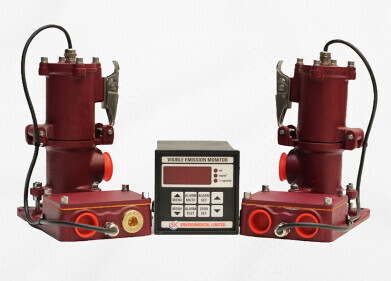Air Monitoring
How Quickly Does Pollution Reduction Save Lives?
Jan 22 2020
With over 90% of the global population exposed to unsafe levels of air pollution, and millions of premature deaths attributable to poor air quality each year, it’s clear that cleaning up our airways should be a priority for governments all over the world. But how quickly can measures geared towards pollution reduction make a tangible difference to those living in the affected areas?
Very quickly indeed, according to a new body of work from Professor Dean Schraufnagel at the University of Illinois in Chicago. Pulling together various studies which have documented how improving air quality in cities has had an almost instantaneously beneficial effect, Schraufnagel demonstrates that tackling pollution is instrumental in saving lives both in the short and long terms.
Encouraging case studies
There is a wealth of evidence pointing to the health benefits of introducing measures which curb pollution, but most of them focus on monitoring changes over an extended period of time. For his research, Schraufnagel specifically sought out case studies where reductions in pollution where shown to have a swift impact. Among those he highlighted, there were the cases of:
- The 1996 Summer Olympics in Atlanta, Georgia. In order to make sure the running of the Olympics went smoothly and to allow athletes, residents and visitors to navigate the city efficiently, the Atlanta authorities shut off some quarters to cars and increased public transportation services. The pollution ratings fell sharply, while asthma visits to the GP among children dropped by 40% and hospitalisations were down 19%. Those benefits continued long after the Games themselves had finished.
- The Irish smoking ban. In 2004, Ireland implemented a blanket smoking ban in public places such as restaurants, bars and shopping centres. Those working in such environments quickly reported fewer symptoms of respiratory problems, while incidences of strokes, heart disease and other coronary complications also slumped.
- A Utah Valley steel mill. In the late 1980s, a steel mill in the Utah Valley was forced to close its doors during the winter months for refurbishment. As the primary source of particulate matter 10 (PM10) pollution in the region, PM10 concentrations fell to almost half of their previous levels. As a consequence, hospital admissions for asthma, bronchitis, pleurisy and pneumonia dropped by 44% among adults and 200% among children. Once the mill reopened, the figures returned to how they had been before.
Clearly, Schraufnagel’s work demonstrates that there is ample evidence of how pollution reduction measures can benefit the health of citizens with almost immediate effect – and the benefits can be financial ones, too. According to the Environmental Protection Agency, the costs of implementing the 1963 Clean Air Act (which is currently being targeted by the Trump administration) are outweighed by the fiscal benefits 32 to 1.
Of course, that’s without even acknowledging the vital role that such measures will play in allowing governments to achieve the greenhouse gas emission targets set by the EU, which will be pivotal in ensuring global warming remains under 1.5°C from pre-Industrial Revolution levels. As such, it makes prudent sense on both a short- and long-term basis to curb emissions as soon as possible.
Digital Edition
IET 34.2 March 2024
April 2024
Gas Detection - Biogas batch fermentation system for laboratory use with automatic gas analysis in real time Water/Wastewater - Upcycling sensors for sustainable nature management - Prist...
View all digital editions
Events
May 03 2024 Seoul, South Korea
May 05 2024 Seville, Spain
May 06 2024 Minneapolis, MN, USA
May 13 2024 Munich, Germany
May 15 2024 Lund, Sweden


















